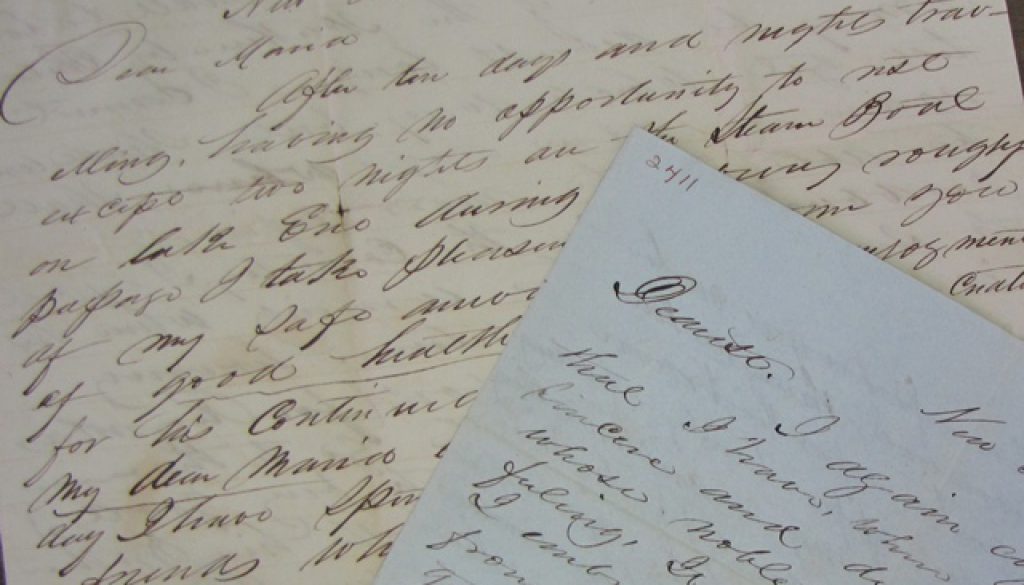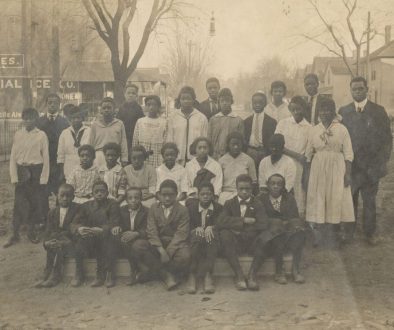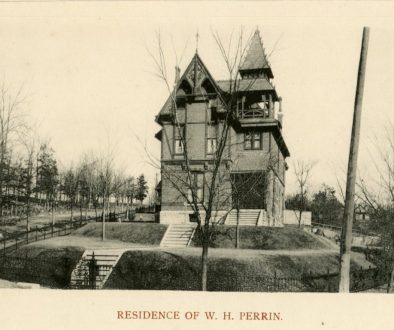The Immigrant Sea Journey from the Netherlands
By guest blogger Mary Anthrop
“…in listening to the conversation of other passengers, I am now beginning to understand how long this voyage is going to take. Had I know this, I would never have left the Fatherland”
Excerpt from a letter of Pieter T. Dykhuizen(1)
Hollanders in the mid 19th century weighed economic, religious or political concerns for themselves and their children in the decisions to immigrate to North America. For example, in the northeastern province of Groningen many landless farm laborers believed that abundant and cheap land in the United States promised to “improve their means of livelihood.” The resolutions to move away from centuries old homes set in motion journeys that changed the lives of future generations. The first step of the journey was the sea voyage across the Atlantic Ocean. For the immigrant the sea journey from the Netherlands at mid-19th century presented many challenges.
Sailing ships, like the “Emil,” a Prussian brig or a Dutch vessel the “Katherine Jackson,” provided the earliest transportation to North America from Rotterdam or Amsterdam. At a cost of $20 to $50 in the currency of the time passengers could expect a trip of five to six weeks. Unplanned and long delays at ports along the way and shipwrecks subjected the travelers to slow progress across the Atlantic. Transportation experiences improved over the 19th century. In the 1860s small steamships reduced the time on the ocean to twenty days. In the 1880s larger iron and steel steamships driven by screw propellers were even faster vehicles. By the 1900s ocean liners carried 2,000 passengers at ten to twelve knots and crossed the Atlantic Ocean in ten to twelve days.
Before boarding a ship, travelers, who were likely in an unfamiliar port, took additional care to avoid either being robbed or being taken advantage of by sellers of foodstuffs and supplies for the journey. Purchasing the necessary cookware and an ample amount of food was made more difficult by the uncertainty of travel time across the ocean. An extra week of travel and not purchasing enough food left the immigrants at the mercy of expensive ship stores.
Conditions on board the ships were likely to be crowded. Passengers jammed into small quarters with children, personal belongings and supplies for the trip; there were no guarantees of bunks for sleeping. Ship captains also did not promise adequate water provisions, medical aid or cooking and sanitary facilities. Passengers arranged their own cooking schedules; ship crews rarely cleaned passenger quarters. Storms at sea, meant hours or days below deck without fresh air. These conditions could easily led to the spread of life threatening diseases.
S.T. Krap (Sijds Theunis Crap)(2) from the village of St. Annaparochie of Friesland led a small party of immigrants to Lafayette in the spring of 1847. In an August 30th, 1847 letter from Lafayette to his family, he described the ocean journey. The newcomers to North America sailed on the “Emil,” a Prussian brig. Krap described the ship as small, but a fast sailing ship. It carried seventy-two passengers. The following excerpts depict the perils and challenges of ocean travel. Ocean journey challenges, however, did not discourage other Netherland immigrants. Small groups of Hollanders continued to move to Tippecanoe County throughout the 19th century.
“Probably you a already know by a letter of J. Jonk that we came safe and sound over the sea, he probably didn’t write very well about this sea journey. Well, we can’t do that neither… we can’t advise anybody, this becomes clear, when you think of sitting between decks for 82 days, where it was most of the daytime just as dark that you could hardly see one another, having to drink dirty water and too little space in the kitchen, so often you had to struggle to get the first rights to cook in the kitchen, but most of all, our food got short, so we ate dry bread the last 14 days…. Our captain helped us by selling salted bacon for 45 cents for 500 grams, and good wheat for 42.5 cents a cup, which cost us a lot of money, but better expensive than nothing….
We sailed April 2nd, had between Rotterdam and Hellevoetssluis a death, a child… at first one worried we didn’t make progress, but now came something else, seasickness, some declared to die, but it ended better; we didn’t loose anyone since we left Hellevoet, although I believe that the 100 pounds we weighed on boarding were at least reduced with 20 on arrival, surely evidence (that) we are not real sailors….
From the 17th to the 18th (May) we had a very bad night because of stormy weather, everything not nailed or well tight, rolled over constantly between decks; we had difficulty to stay in our berths; in the morning at 10 the storm became less, although waves still rolled over the ship, really a strange sight for someone who never saw something like that, because in my opinion the highs and lows of the waves differed at least 40 to 50 feet….
Then the 15th (June) in the afternoon we had a rainstorm with several thunders, in the evening it got worse together with stormy winds, till at 12pm we were struck by a rainstorm, which was so terrible with 5 to 6 lightings, which were so close, that all of them could have hit the ship; because immediately after the lighting followed a strong thunder, that made the ship tremble. I stayed between decks, where the steersman visited us, with the saying: ‘O God! O God! What weather, fire is falling from the sky next to the ship in the water, people be careful!’ This my friends, was to us a fearful night, but thanks God, the storm passed over, without damaging the ship.”(3)
[1] The Dutch in Lafayette and Tippecanoe County. The report was prepared as one segment of the Tippecanoe County Historical Association’s Local History Seminar “The Religious and Ethnic Heritage of Tippecanoe County.” It was authored and presented by P. John DeYoung in 1994. [2] While Krap arrived safely in Tippecanoe County, he died in 1849. He is buried in Greenbush Cemetery. [3] Ten Letters Concerning Journey, Arrival and Settlement to and in Northern America of Some Emigrants
Left from the Communities Het Bildt and Barradeel in Friesland. Printed in Franeker, by Telinga, 1848. Photocopy available in TCHA library vertical file collection.




